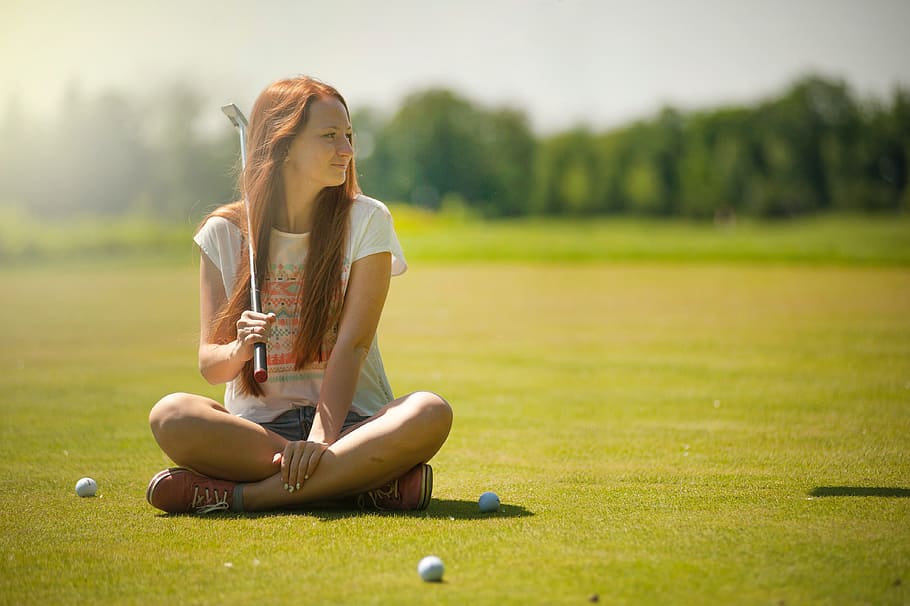The typical golfer’s mantra is “practice, practice, practice,” but the truth is that practice isn’t always the answer. If your body isn’t strong enough to swing the club properly from the get-go, excessive practicing could cement bad form and habits that harm your game. Worse, if you don’t continue to train your body in different ways, you could create injuries in your golf muscles that take a long time to heal.
Golf is exercise — no one is arguing that fact — but you should consider participating in other workouts to increase your body’s overall strength and wellness. Here are a few ways you can.
Warm-ups
Before any workout, but especially before you practice or play a round of golf, you need to warm up your body. This entails encouraging blood flow to the muscles you are about to work, increasing your heart rate and generally preparing your entire system for vigorous exercise. The best warm-ups are dynamic, meaning they make you move; in contrast, static warmups, also called stretches, put you at some risk for injury because your muscles and connective tissues are cold, stiff and liable to strain and tear.
Because golf utilizes your entire body, you should do at least one warmup exercise per muscle section: arms and shoulders, legs and hips, core and back. For example, a go-to warmup for many golfers consists of a variety of arm circles (for arms and shoulders), leg swings (for legs) and waist bends. However, you might also want to incorporate some low-intensity cardio, like jumping jacks, lunges, jump rope or a short jog. You shouldn’t try to tire yourself out or lose your breath; once you feel warm and awake, you can start your real workout.
Posture Practice
Before you pick up a resistance band or lay out a floor mat, you need to learn a thing or two about posture. The proper posture is incredibly important during any kind of training, whether you are trying to become a body builder or an excellent golfer. If you don’t hold your body in the right positions during certain maneuvers, you will put certain muscles at severe risk for injury, which means skipping the links for weeks, months or even the rest of your life.
In general, the best postures include a straight back, lowered shoulder blades and slightly bent elbows and knees — but the truth is that you can’t learn how to hold your body by reading about it. You almost definitely need hands-on training from golf experts, as you might find at the best Florida golf schools. You can enroll in a quick weekend camp to learn all you need to about posture during workouts, practices and games.
Resistance Training
Resistance training is a broad field of physical fitness whereby you gain strength by moving your body against various forms of resistance, such as gravity, weighted bars and elastic bands. You might not think of golf as a sport requiring excessive strength, but the truth is that the more power you have in your muscles, the farther you can tee off and the longer you can play without feeling fatigue.
As mentioned before, golfers use almost every part of their body for sport, so isolation exercises aren’t usually ideal. Instead, you should focus on full-body exercises. There is a range of exercises to try, graded by ability level; for example, if you are new to training, you might try slow burpees, which are bodyweight exercises, or medicine ball slams, but if you often hit the gym, you can do man-makers (burpees with dumbbells) or even clean-and-jerks.
Core Training
Your core consists of the muscles around your middle, which help you stay upright and maintain stability as you move. Golfers with poor aim and bad balance often suffer from a weak core, so by focusing at least one workout a week on your core muscles, you are likely to gain greater accuracy in your drives and puts, resulting in a lower handicap and more fun on the course.
There are a few different ways to build a strong, stable core. Pilates and yoga are two exercise styles that tend to focus on core strength, so enrolling in a class in your area might be convenient. Otherwise, you can motivate yourself to do any number of core exercises at home or in the gym
Cool-downs
As important as warmups, cool-downs tell your body that the workout is over, so your heartrate, breathing rate and body temperature start to reduce. Plus, cool-downs tend to be static movements — like stretching, which will increase your flexibility and also improve your game. Stretching tends to loosen the tension in your muscles and release any built-up lactic acid, which can help with soreness and improve recovery in the coming hours and days. You should do between three and 10 minutes of cool-down stretching at the end of every workout, for safety and relaxation.
No athletic endeavor benefits from single-minded training. You need to work your body in other ways besides swigging a club, so you have the strength and mobility to play the best possible game of golf.
Richard Clayton
Recent Posts
- Castor Oil For Better Hair Growth: Is It Myth Or Fact?
- Exploring the Differences Between Sermorelin, Ipamorelin, Ibutamoren, GHRP2, and GHRP6: Understanding Their Role in Human Growth Hormone Regulation
- Unraveling the Mystery: Understanding the Causes and Prognosis of Ventricular Tachycardia Without Apparent Heart Disease
- Understanding Grandparents’ Rights in Oklahoma: Navigating Visitation and Legal Protections
- 10 Reasons to Consider Hypnotherapy for Your Health

